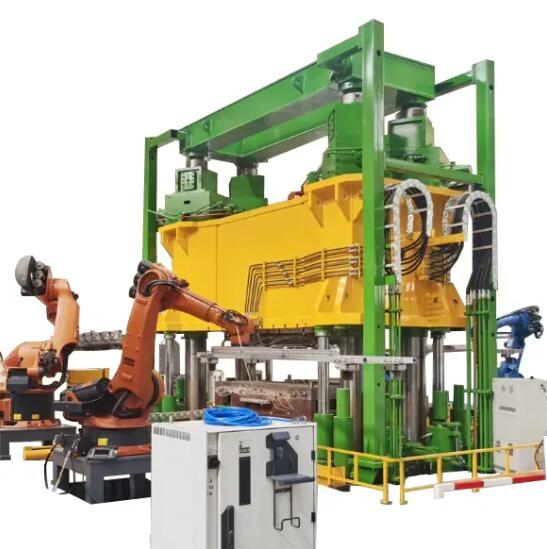Understanding the Heartbeat of Manufacturing: Key Components of Hydraulic Presses for SMC Forming
2024-02-27
Introduction:
In the realm of manufacturing, hydraulic presses stand as stalwart machines, driving efficiency and precision in the forming of Sheet Molding Compound (SMC). Behind their robust performance lie several key components that work in unison to deliver unparalleled shaping capabilities. In this blog, we'll delve into the essential components of hydraulic presses used for SMC forming, shedding light on their roles and contributions to the manufacturing process.
1. Hydraulic Power Unit:
At the core of every hydraulic press is the hydraulic power unit (HPU), which serves as the powerhouse of the system. The HPU comprises components such as hydraulic pumps, reservoirs, filters, and valves. Hydraulic pumps generate the necessary hydraulic pressure by converting mechanical energy into fluid power, while reservoirs store hydraulic fluid and ensure continuous supply to the system. Filters remove contaminants from the fluid, ensuring smooth operation, while valves regulate fluid flow and pressure to control the movement of hydraulic cylinders.
2. Hydraulic Cylinders:
Hydraulic cylinders are the workhorses of the hydraulic press, responsible for generating the force needed to shape and mold SMC sheets. These cylinders consist of a cylindrical barrel, a piston, and a rod. When hydraulic pressure is applied to the piston, it moves linearly within the cylinder, exerting force on the workpiece through attached tooling or pressing surfaces. Hydraulic cylinders come in various sizes and configurations to accommodate different forming requirements, offering flexibility and versatility in SMC forming processes.
3. Pressing Surface:
The pressing surface of a hydraulic press, also known as the platen or die, is where the SMC sheet is placed for forming. This surface may feature specialized tooling, such as molds, dies, punches, or blanks, depending on the desired shape and configuration of the final part. The pressing surface is designed to withstand high pressures and temperatures encountered during the forming process while providing precise contact and support to the workpiece.
4. Control Systems:
Modern hydraulic presses are equipped with advanced control systems that govern the operation of the press and ensure optimal performance. These control systems include programmable logic controllers (PLCs), human-machine interfaces (HMIs), sensors, and actuators. PLCs execute programmed sequences of commands to control hydraulic pumps, valves, and cylinders, while HMIs provide operators with intuitive interfaces for monitoring and adjusting process parameters. Sensors detect changes in pressure, temperature, and position, enabling real-time feedback and automatic adjustment of press settings.
5. Safety Features:
Safety is paramount in hydraulic press systems, and several components are incorporated to ensure operator protection and prevent accidents. Safety features may include emergency stop buttons, safety interlocks, light curtains, and pressure relief valves. Emergency stop buttons allow operators to halt press operation in case of emergencies, while safety interlocks prevent access to hazardous areas during operation. Light curtains detect the presence of objects or personnel in the press area, triggering automatic shutdown if necessary, while pressure relief valves prevent overpressure situations that could lead to equipment damage or injury.
Conclusion:
Hydraulic presses for SMC forming comprise several key components that work together seamlessly to deliver precision, efficiency, and reliability in the manufacturing process. From the hydraulic power unit and cylinders to the pressing surface, control systems, and safety features, each component plays a crucial role in shaping and molding SMC sheets into high-quality parts and components. As technology advances and manufacturing demands evolve, hydraulic presses continue to stand as indispensable tools in the pursuit of innovation and excellence in SMC forming.



